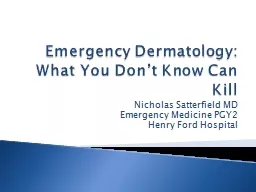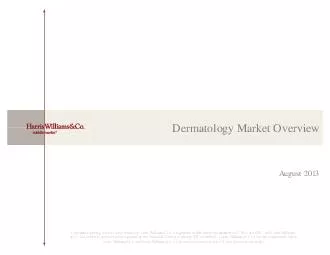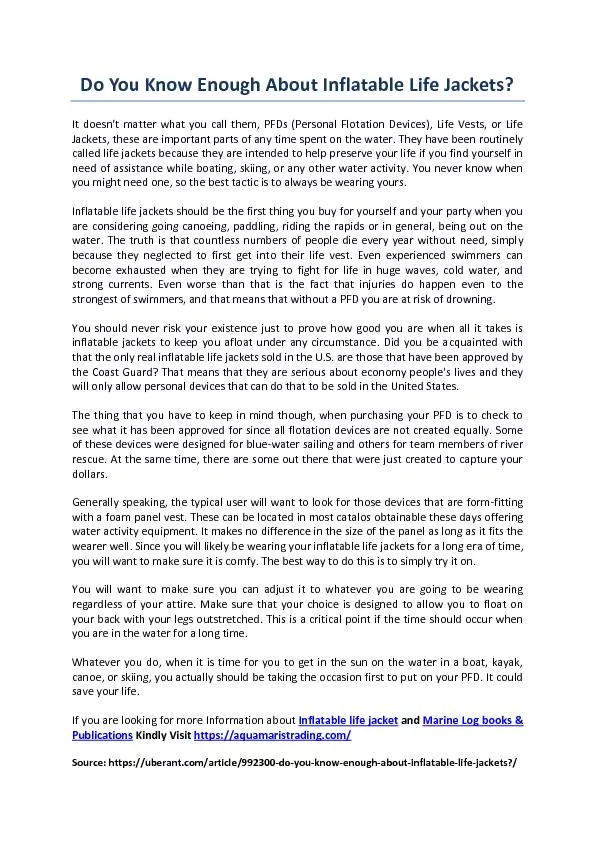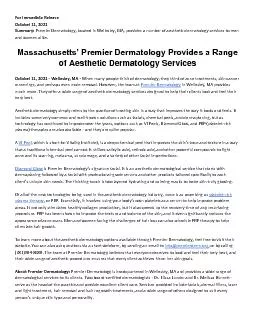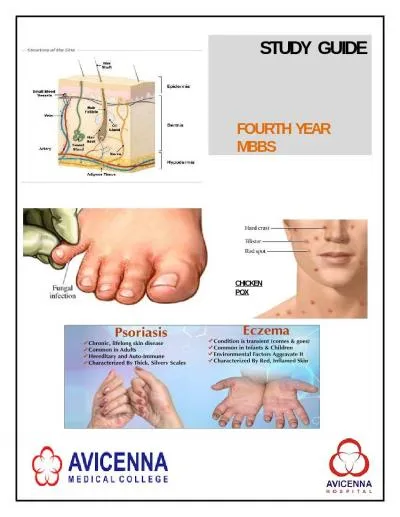PPT-Emergency Dermatology: What You Don’t Know Can Kill
Author : tawny-fly | Published Date : 2020-04-03
Nicholas Satterfield MD Emergency Medicine PGY2 Henry Ford Hospital Define dermatologic terms Discuss the approach to dermatologic complaints Discuss dermatologic
Presentation Embed Code
Download Presentation
Download Presentation The PPT/PDF document " Emergency Dermatology: What You Don’t..." is the property of its rightful owner. Permission is granted to download and print the materials on this website for personal, non-commercial use only, and to display it on your personal computer provided you do not modify the materials and that you retain all copyright notices contained in the materials. By downloading content from our website, you accept the terms of this agreement.
Emergency Dermatology: What You Don’t Know Can Kill: Transcript
Download Rules Of Document
" Emergency Dermatology: What You Don’t Know Can Kill"The content belongs to its owner. You may download and print it for personal use, without modification, and keep all copyright notices. By downloading, you agree to these terms.
Related Documents

